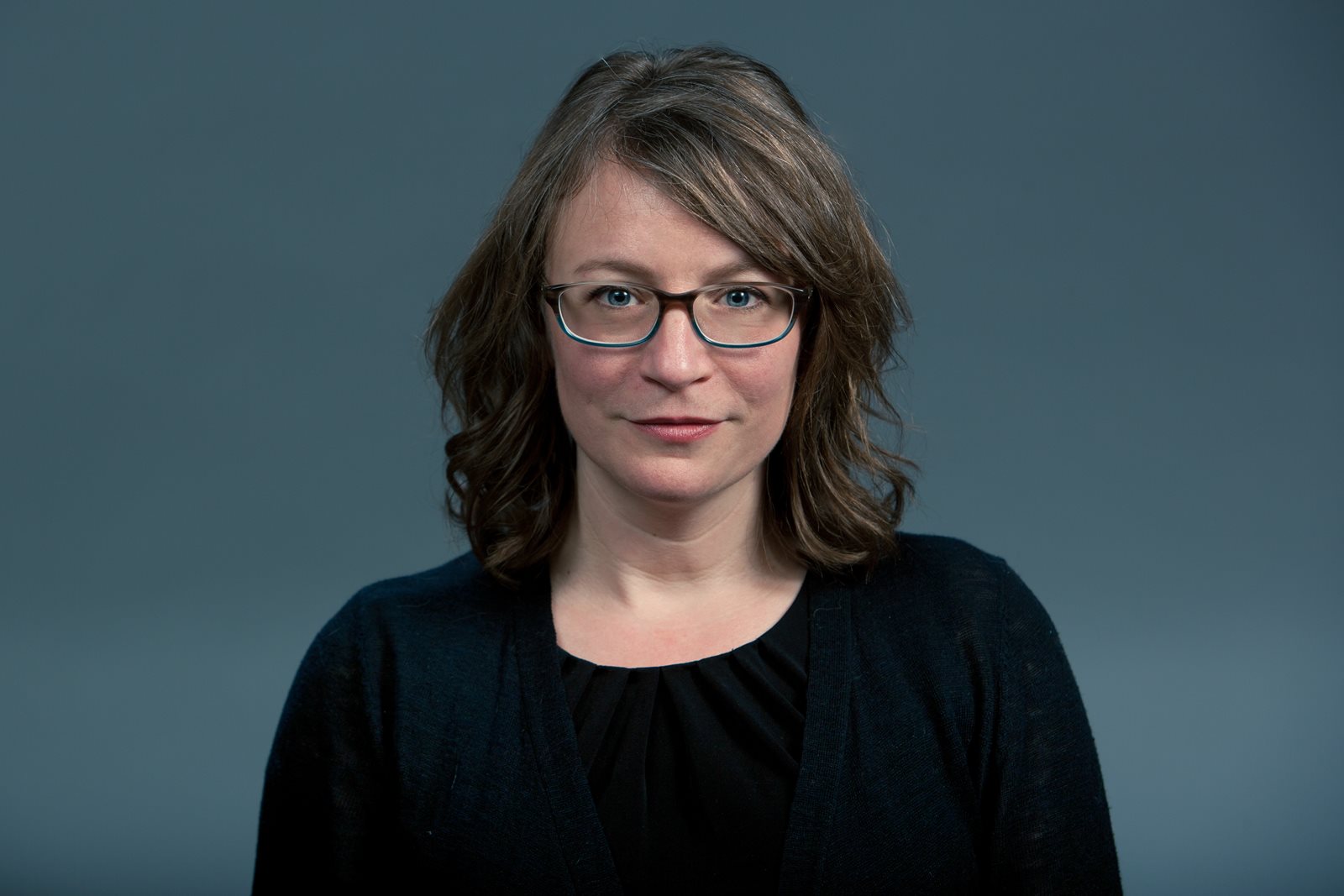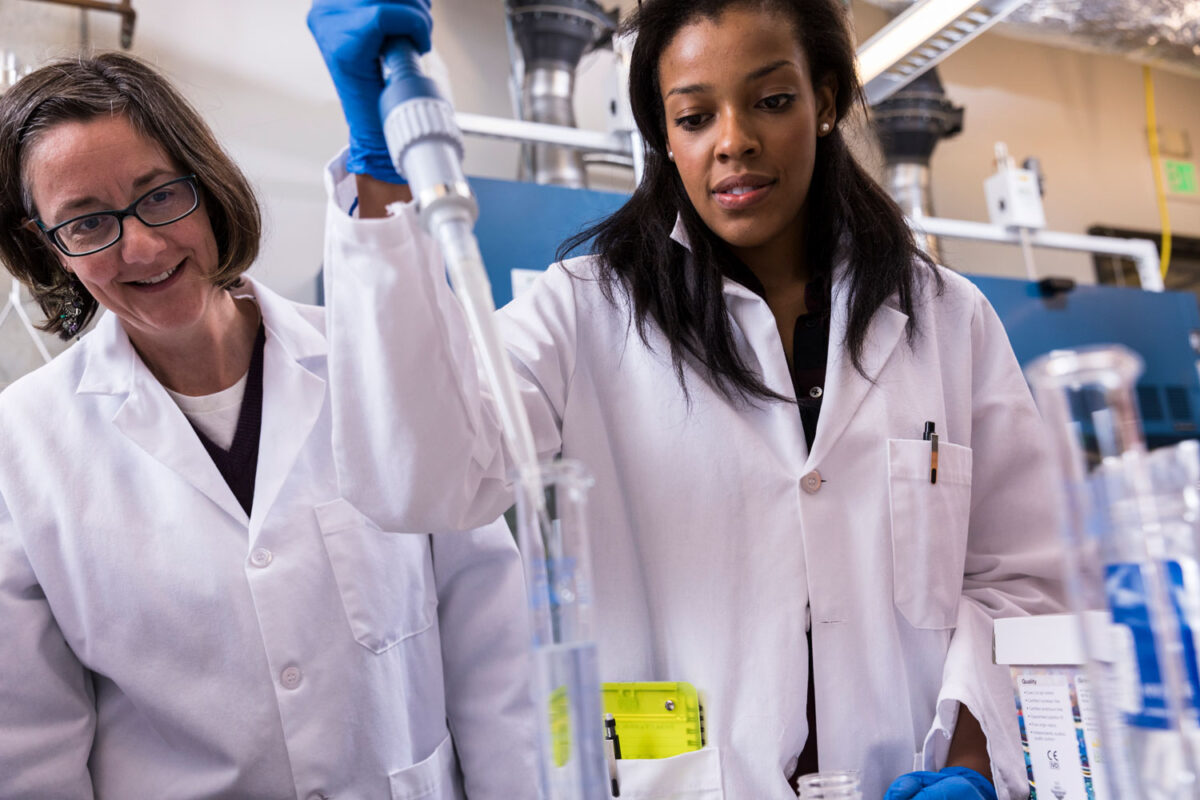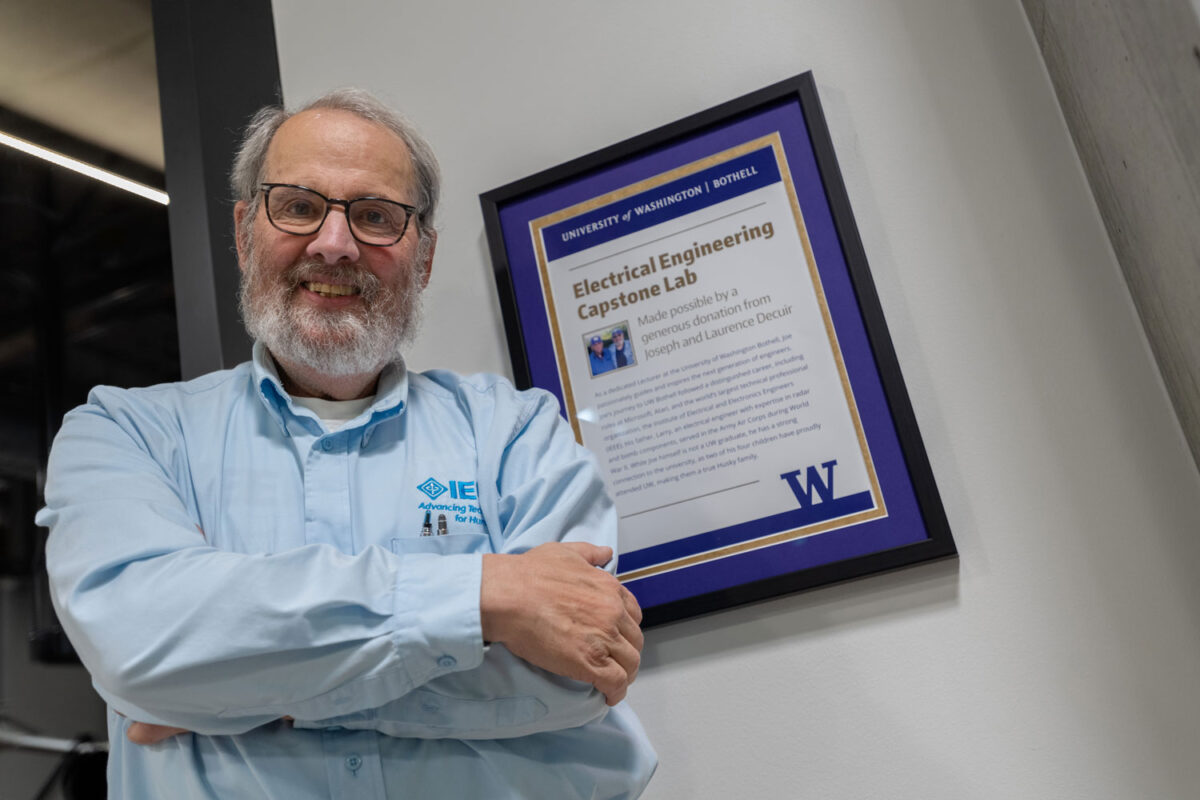This map shows the land cover for Snohomish County with impervious coverage colored pink to red, with red being 80-100 percent. The hottest areas correspond with the darkest red.

By Douglas Essser
When temperatures hit the 90s in western Washington and everyone looks for relief, some residents might be surprised to learn they’re living in a “heat island.”
A heat island is an area that’s warmer than the regional background due to buildings, roads and parking lots that hold warmth and limit cooling vegetation. Heat islands are a consideration in discussions about climate change, development and community health. They are a special interest of Caitlin Moore, a recent Master of Arts in policy studies (MAPS) graduate from the University of Washington Bothell.
For her spring capstone research project, Moore mapped temperatures and impervious surfaces in Snohomish County to identify heat islands. Her report, “Turning Up the Heat: Urban Heat Islands in Snohomish County,” documents that developed areas of Everett and other cities are warmer than rural areas. The difference can be as much as 10-to-15 degrees at night. Photo: Caitlin Moore (Marc Studer)

“I then used U.S. Census data to determine who lives in these heat islands,” Moore wrote. “People of color and the poor are predominantly represented in these areas, and the highest concentration of people aged 65 and over are also living in the urban areas.”
The aged are the most at-risk when the thermometer nears the top. If they don’t have air conditioning, they may have to seek relief at cooling stations or air-conditioned areas such as malls and movie theaters. Children under 5 also are especially vulnerable. Everyone should remember to drink plenty of water. Try to stay cool and hydrated.
Moore, an Everett resident, gave her research to the Snohomish Health District. Interim Administrator Jeff Ketchel says it will be part of the county’s healthy housing assessment in October.
“This is very useful to us. Very few people have air conditioning. If we get up to 100 degrees that puts people at real risk” for heat-related conditions, said Ketchel. Moore’s report also helps the district prepare for climate change and heat-related issues such as drought and air quality.

In addition, Ketchel says he enjoys working with faculty and students at UW Bothell where he received his MAPS degree in 2008.
“I like having access to quality grad students who have a strong passion for public health and the environment,” he said. “And it also gives them some real-world experience.”
But for now, we all just have to get through the hot spell, especially in the evenings when heat islands are slow in backing off the high temperatures of the day. “You don’t even get a break,” Ketchel says.



